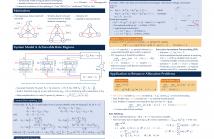- Transducers
- Spatial and Multichannel Audio
- Source Separation and Signal Enhancement
- Room Acoustics and Acoustic System Modeling
- Network Audio
- Audio for Multimedia
- Audio Processing Systems
- Audio Coding
- Audio Analysis and Synthesis
- Active Noise Control
- Auditory Modeling and Hearing Aids
- Bioacoustics and Medical Acoustics
- Music Signal Processing
- Loudspeaker and Microphone Array Signal Processing
- Echo Cancellation
- Content-Based Audio Processing

This work proposes a real-time movement control algorithm for massive unmanned aerial vehicles (UAVs) that provide emergency cellular connections in an urban disaster site. While avoiding the inter-UAV collision under temporal wind dynamics, the proposed algorithm minimizes each UAV’s energy consumption per unit downlink rate. By means of a mean-field game theoretic flocking approach, the velocity control of each UAV only requires its own location and channel states.
SPAWC 2018.pdf
- Categories:
 10 Views
10 Views
- Read more about Information Aging through Queues: A Mutual Information Perspective
- Log in to post comments
MIposter.pdf
- Categories:
 1 Views
1 Views
- Read more about Information Aging through Queues: A Mutual Information Perspective
- Log in to post comments
MIposter.pdf
- Categories:
 7 Views
7 Views
- Read more about Optimal Resource Allocation for Non-Regenerative Multiway Relaying with Rate Splitting
- Log in to post comments
Optimal resource allocation in interference networks requires the solution of non-convex optimization problems. Except from treating interference as noise (IAN) one usually has to optimize jointly over the achievable rates and transmit powers. This non-convexity is normally only due to the transmit powers while the rates are linear. Conventional approaches like the Polyblock Algorithm treat all variables equally and, thus, require a two layer solver to exploit the linearity in the rates and keep the computational complexity at a reasonable level.
poster.pdf
- Categories:
 18 Views
18 Views
- Read more about COMPUTATIONAL STRATEGIES FOR STATISTICAL INFERENCE BASED ON EMPIRICAL OPTIMAL TRANSPORT
- Log in to post comments
In this talk we discuss some recent limit laws for empirical optimal transport distances from a simulation perspective. On discrete spaces, this requires to solve another optimal transport problem in each simulation step, which reveals simulations of such limit laws computational demanding. We discuss an approximation strategy to overcome this burden. In particular, we examine empirically an upper bound for such limiting distributions on discrete spaces based on a spanning tree approximation which can be computed explicitly.
- Categories:
 27 Views
27 Views
- Read more about Study Of Dense Network Approaches For Speech Emotion Recognition
- Log in to post comments
- Categories:
 3 Views
3 Views
- Read more about Speech Prediction using an Adaptive Recurrent Neural Network with Application to Packet Loss Concealment
- Log in to post comments
- Categories:
 217 Views
217 Views
- Read more about Compressive Sampling of Sound Fields Using Moving Microphones
- Log in to post comments
- Categories:
 59 Views
59 Views
- Read more about MULTI-DIALECT SPEECH RECOGNITION WITH A SINGLE SEQUENCE-TO-SEQUENCE MODEL
- Log in to post comments
- Categories:
 44 Views
44 Views